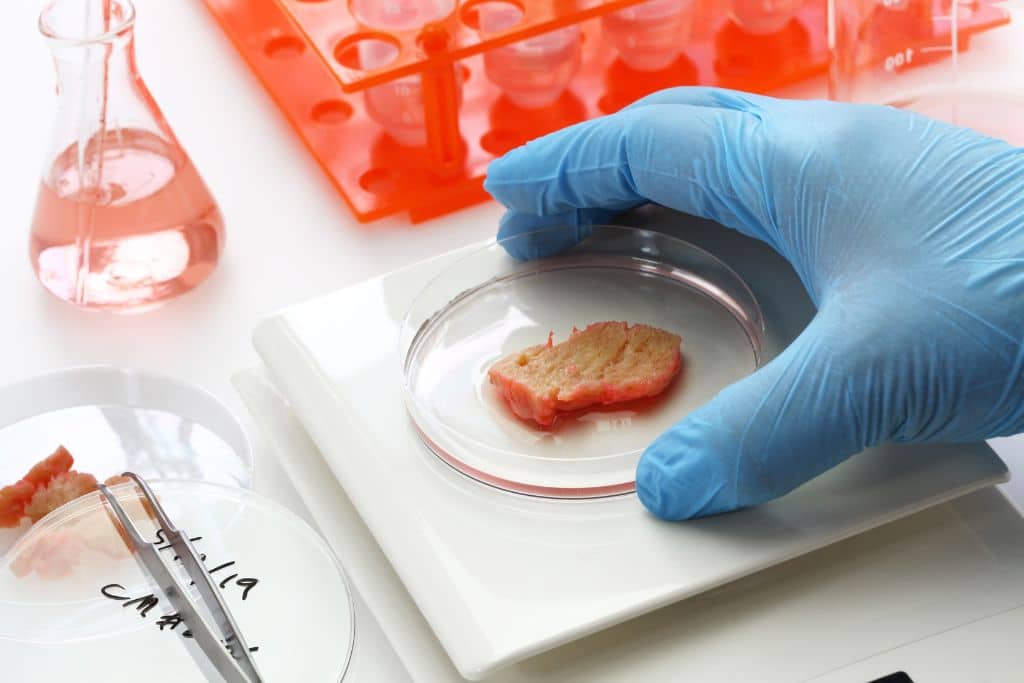You might be shocked to discover that livestock farming has a significant impact on global warming, making up 14.5% of global greenhouse gas emissions which are mainly coming from cattle. With the deadline to reach net-zero carbon emission as set in the Paris Agreement quickly approaching, businesses and governments around the world have been racing to find a more sustainable way to continue feeding more than eight billion people worldwide. Fortunately, a solution may be near as promising advancements have been made in cellular agriculture. This presents a potential key to reducing food-related greenhouse gas emissions without disrupting the continuously growing need for food.
—
What Is Cellular Agriculture?
Cellular agriculture is a biotechnology that draws on regenerative medicine and synthetic biology research to make it possible for scientists to produce animal-based products in a laboratory using cell lines in bioreactors. Currently, there are two popular methods scientists have been using to create these animal-based products.
1. Acellular Products: Acellular products are created without using living material or cells but using organic products like fats and proteins. For example, scientists might use different yeasts and bacteria to recreate the milk you would use in cereal or the cheese to go with your crackers.
2. Cellular Products: In contrast to acellular products, cellular products are created using living or once-living cells. This process enables scientists to employ several techniques, most notably tissue engineering, to grow meat with a taste, feel, and nutritional value similar to what you would otherwise purchase from your grocery store.
You might also like: Lab-Grown Meat: Benefits and Barriers to Becoming a Commercially Available Meat Product
At the moment, the primary focus of cellular agriculture has been on cultured meat, i.e., growing meat, milk, eggs, and other animal-based products. However, the implications of this biotechnology could have transformative effects on multiple industries, including cosmetics and pharmaceuticals.
In 2023, Mark Post, a scientist and professor of Vascular Physiology at the University of Maastricht, presented the world with the first cultivated burger on live television, leading to an explosion in the cultivated meat market. As of 2022, over 150 companies and nearly US$3 billion have been invested in the cultured meat and seafood industry, leading to significant results.
For example, Singapore was the first country to approve the sale of a cultivated chicken product, and it is now being sold at restaurants, grocery stores, and retailers in the capital.
Why Does it Matter?
A combination of human activities, including livestock farming, has led to rising temperatures on Earth through the ‘the greenhouse effect.’ Although greenhouse gases occur naturally, the huge spike in activities such as burning fossil fuels, cutting down forests, coal mining, and livestock farming have contributed to a substantial and dangerous rise in emissions, leading to global warming. Global warming can lead to numerous issues for the planet and its inhabitants, such as rising sea levels, extreme weather conditions, mass extinctions, and infectious disease outbreaks.
The idea is that the development of cellular agriculture and cultivated meat could enable us to reduce emissions while using fewer resources when putting meat and animal products onto our dinner tables and into our stomachs.
A 2021 study concluded that by 2030, cultivated meat and cellular agriculture could reduce emissions by 92%. This a significant accomplishment towards reaching net-zero carbon emissions, considering how large of an impact livestock farming has on rising greenhouse gas levels.
3 Companies Paving the Way
With hundreds of companies and billions of dollars already being invested into cellular agriculture and cultured meat, here are a few of the organisations making an impact and leading the charge.
1. Memphis Meats, US
Memphis Meats, renamed Upside Foods, was the first cultivated meat company in the US and has already reached unicorn status with a valuation of over US$1 billion. In July 2023, they marked an epic milestone by selling the first cultivated meat product in the United States.
2. SuperMeat, Israel
Israeli startup SuperMeat is the world’s first farm-to-fork facility where anyone has the opportunity to watch the production process through a glass wall, helping to shed light and build awareness on cultivated meats. With millions of dollars in funding, SuperMeat is backed by top-notch investors including New Crop Capital, Stray Dog Capital, and PHW, one of Europe’s largest producers of chicken.
3. Shiok Meat, Singapore
Singapore is frequently at the forefront of cellular agriculture and Shiok Meat is an example of this. The startup was founded in 2018 by two stem cell scientists looking to release cell-based seafood products. Their aim is to tackle declining oceanic populations and sustainability issues by growing delicious and nutritious crab, lobster, and shrimp meat.
How Can You Take Action Now?
As biotechnology continues to flourish and research in cellular agriculture evolves, we hope to see more innovative companies step up and invest in the scalable production of cultured meat. Successfully transitioning to a more equitable and eco-friendly agricultural industry is directly affected by public opinion and our collective willingness to adapt and accept changes in how and what we eat. With the rapidly degenerating climate crisis, it is now more urgent than ever to take tangible action to protect our previous planet.
You might also like: The Future of Farming: Can We Feed the World Without Destroying It?


















